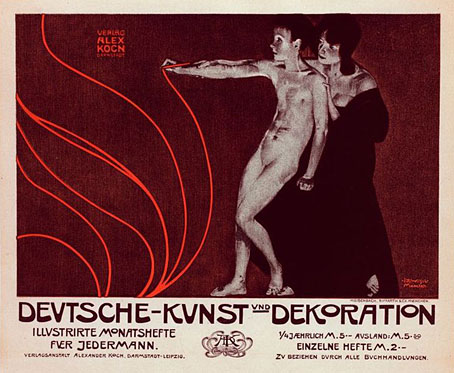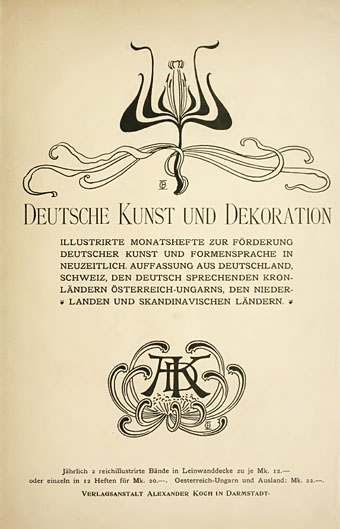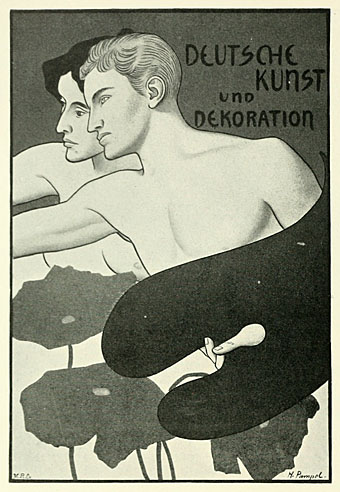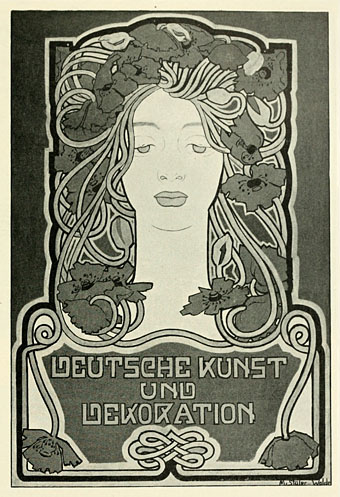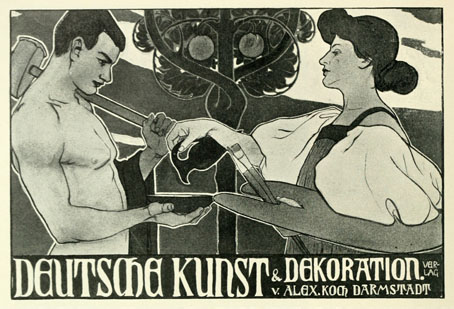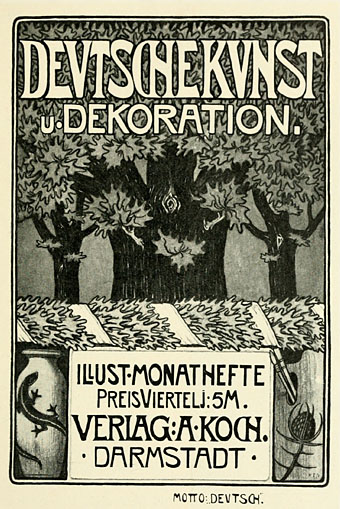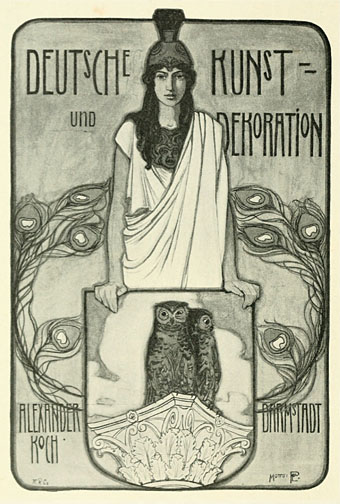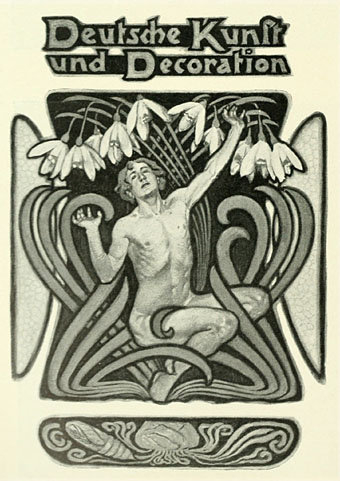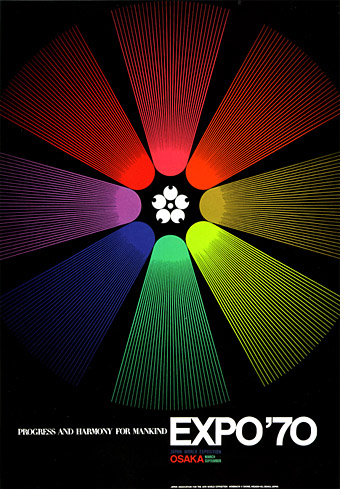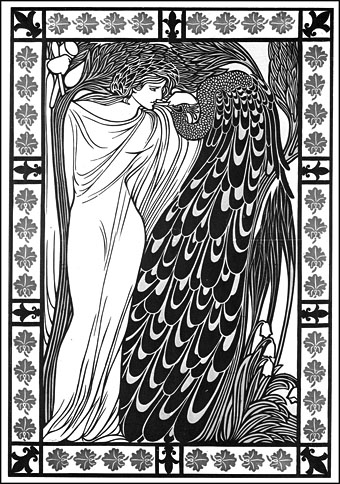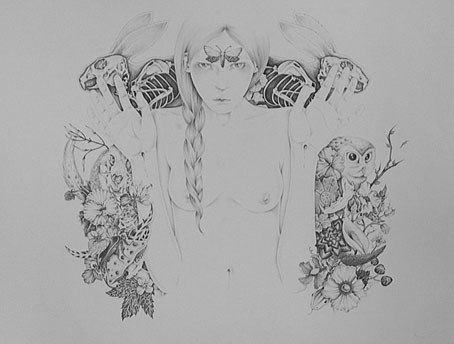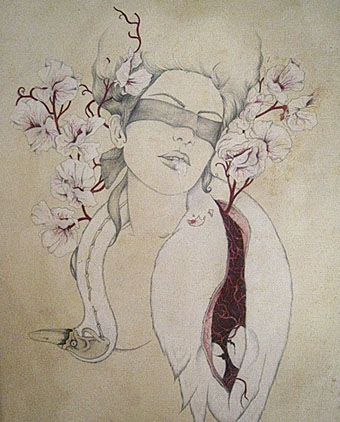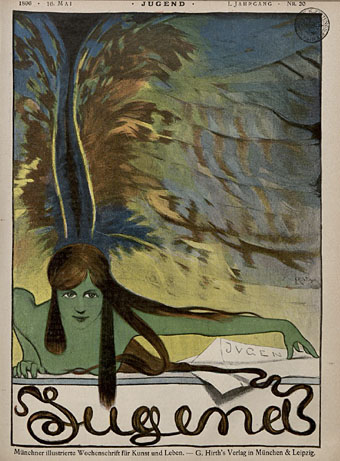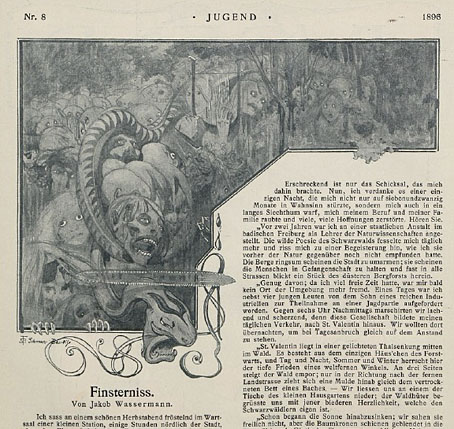Deutsche Kunst und Dekoration (1897) by Joseph Rudolf Witzel.
One of the discoveries made by following leads from the back issues of Jugend magazine was the unearthing of another cache of German periodicals at the Internet Archive. Deutsche Kunst und Dekoration (German Art & Decoration) was founded by Alex Koch in 1897 and the early editions are heavily advertised in the back pages of Jugend. Koch’s journal covers similar ground to the art magazine Pan which was running at the same time but includes additional features on furniture, architecture and interior design. Given the period, all the early issues are heavily biased towards Art Nouveau as the following samples demonstrate. I’m not sure what the figures in Joseph Rudolf Witzel’s poster are supposed to represent. Jugend means “youth”, and most of the Art Nouveau artists and designers were relatively young so it’s possible to see the boy as representative of this. In which case the woman would have to be a muse since it’s only as muse figures (or goddesses, like the picture of Athena below) that women are allowed much of an active role in art of this period.
The Internet Archive has 50 volumes of Deutsche Kunst und Dekoration covering 1898 to 1922. I’ve barely begun to look at these, and I’ve already found more journals along similar lines so expect this to be a recurrent theme for a while. The following graphics are samples from the first volume, a series of designs for posters and bookplates.
Previously on { feuilleton }
• Jugend, 1896
• Jugend Magazine revisited
• The Great God Pan
• Jugend Magazine

